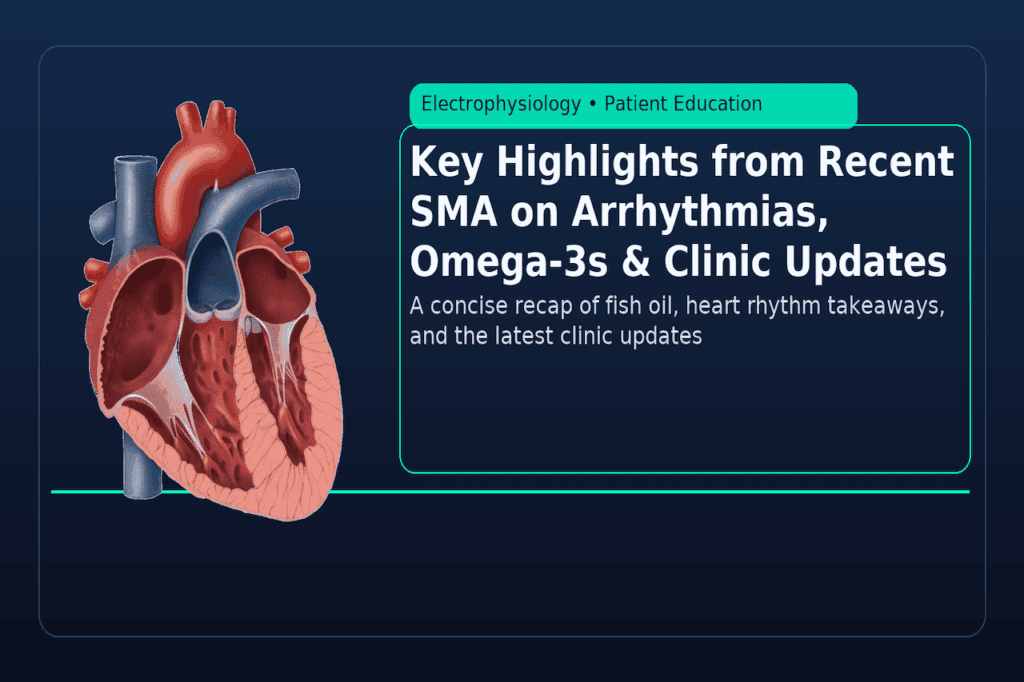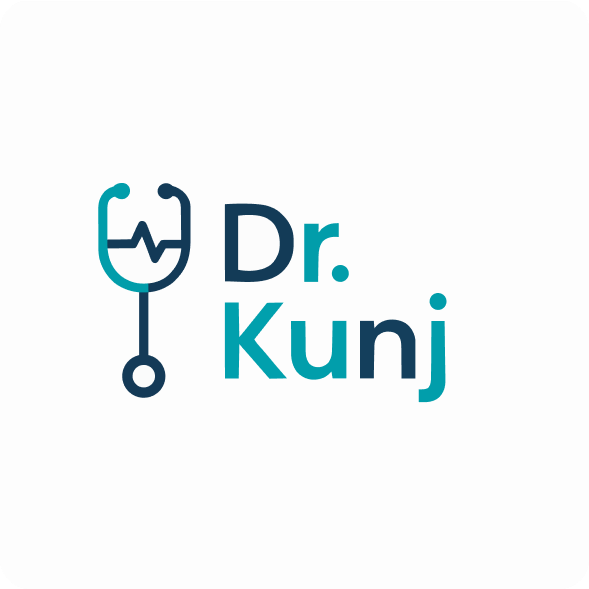Why This Matters
In our latest Shared Medical Appointment (SMA) for heart rhythm care, we covered how you’ll soon access our teaching content online, what omega-3s can (and can’t) do for heart health, and the next SMA dates. Below is your clear, patient-friendly recap, perfect to bookmark and share.We’re Putting the “Education” in Your Hands
Educational videos are rolling out, privacy protected
We’re working to publish the educational portion of our SMAs online so you can revisit the material anytime. One video is already out on the clinic’s social channels (try searching “CRISSP EP Clinic”), but expect a little lag between recording, editing, and release. Importantly, only teaching content appears online, no patient names, faces, or voices.Omega-3s and Your Heart: What the Evidence Really Says
What omega-3s are (and where they come from)
Proven benefit: triglyceride lowering
Omega-3s consistently lower triglycerides and have been associated with a lower risk of dying from coronary heart disease. That makes them a useful tool in a broader heart-health plan discussed with your clinician.Not a fix for arrhythmias
A common question: do omega-3s prevent arrhythmias? Current evidence does not show protection from heart rhythm problems. Omega-3s are helpful for lipids and overall cardiovascular support, but they’re not an anti-arrhythmia therapy. Keep them in perspective and follow your EP team’s guidance for rhythm management.Don’t Eat Much Fish? Here’s a Smart Plan
Food-first ideas you can use today
- Walnuts, flaxseed, and chia are great plant sources.
- Grind your seeds (a coffee grinder works) so nutrients are better absorbed whole seeds often pass through without unlocking the benefits.
When to consider supplements
If you rarely eat fish, ask your care team if an algae-based EPA/DHA supplement fits your plan. You can also monitor your status with an Omega-3 Index (RBC EPA+DHA) test and review results with your clinician.Simple Testing to Discuss With Your Clinician
- Fasting lipid panel (to check triglycerides)
- Omega-3 Index (RBC EPA+DHA) for baseline and follow-up tracking
- Your care team can help interpret these numbers and tailor the plan.
Quick Reference: Arrhythmias 101
Eat the Rainbow (and How to Hit 30-50 Plants/Week)
Takeaway & Next Steps
- Use omega-3s wisely: great for triglycerides and overall arterial support; not a rhythm shield.
- Food first, supplement if needed: grind seeds; consider algae-based EPA/DHA if you don’t eat fish.
- Measure what matters: lipid panel + Omega-3 Index; review results with your clinician.
- Keep learning: watch for new education-only SMA videos, and join an upcoming session to get your questions answered.
Shop the Mentioned Items
FAQs
Do omega-3s prevent AFib or other arrhythmias?
No. While omega-3s support overall cardiovascular health, they haven’t been shown to prevent arrhythmias. Continue working with your EP team on rhythm-specific strategies.What’s the most reliable benefit of omega-3s?
Triglyceride reduction is the most consistent clinical benefit. Some studies also associate higher omega-3 status with lower coronary mortality, but arrhythmia prevention hasn’t been demonstrated.I’m plant-based. Can I still raise EPA/DHA?
Yes—consider algae-based EPA/DHA supplements. Also include ground flax/chia and walnuts to boost total omega-3 intake.Should I grind my flax or chia?
Yes. Grinding improves nutrient availability; whole seeds often pass through without delivering the full benefit.Which tests help me track progress?
Ask your clinician about a fasting lipid panel (focus on triglycerides) and an Omega-3 Index (RBC EPA+DHA) to see your baseline and retest after changes.Disclaimers:
- General Education: This article is educational and not a substitute for personal medical advice. If you have symptoms or elevated test results, consult your healthcare professional.
- Affiliate Links: This article may include affiliate links; if you purchase through them, we may earn a small commission at no extra cost to you.



